Meet the Olympic B-Girls Using Beauty to Make Their Mark
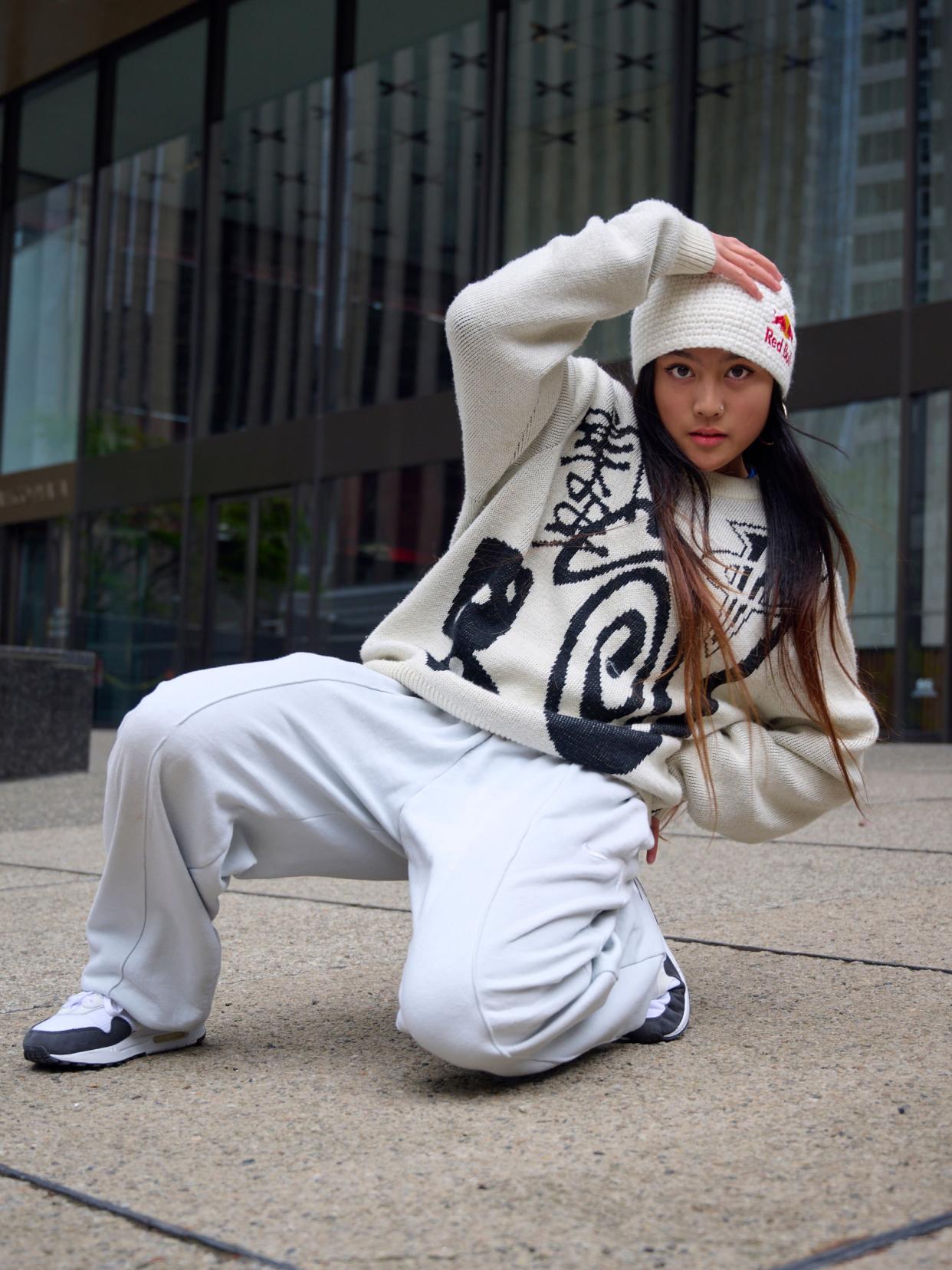
On a drizzly day in Seattle in early April, Logistx bursts into the cypher at Red Bull Lords of the Floor, her oversized blue Nike jersey and baggy white sweatpants swaying as she launches into her opening moves. While breaking is mostly about showing off your strength and power, Logistx is also pulling a fierce look: She’s wearing a pair of two-inch silver hoops, a ponytail with strawberry blonde balayage, and sharply cut black eyeliner.
One of only three women participating in the famous breaking event, Logistx is using beauty to leave her mark on the floor. She’s not asking permission. Her jewelry and makeup don’t impact her dance moves. And she proves it as she headspins into the next round of the competition alongside her partner, India.
With roots in the late 1960s and 1970s, breaking—not breakdancing, which is a misnomer mistakenly coined by the media—has never just been about the impressive choreography; it’s about the culture. Created by Black and Latino youths in the Bronx, hip hop is at the core of the sport. With four main dance components—toprock, footwork, freezes, and power moves—some argue that the fifth element of breaking is swag.
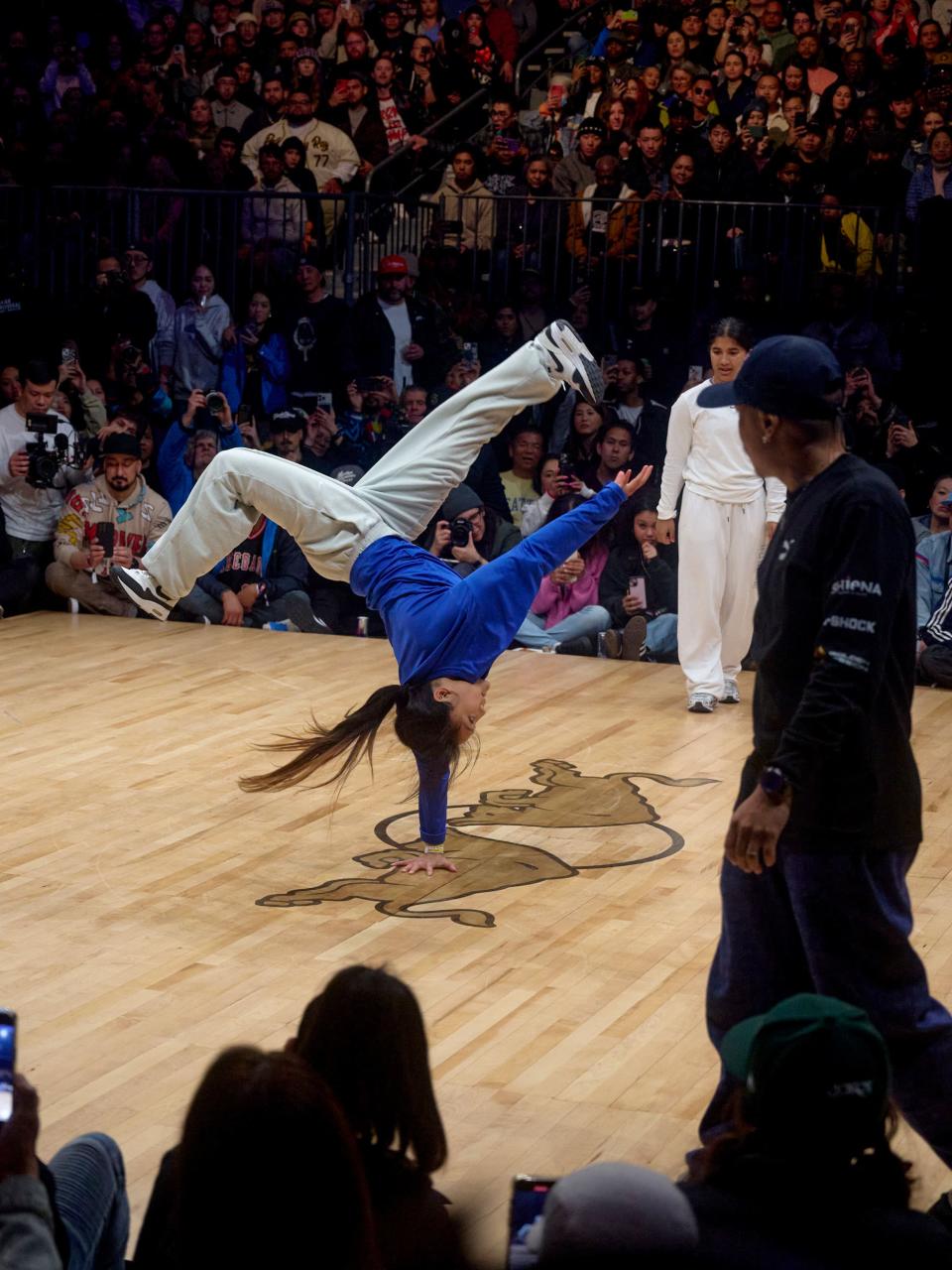
Breaking is primarily done inside a cypher, which is a circle formed by audience members and other dancers on any given floor. In true battle format, only one breaker is allowed to dance at a time and often playfully eggs on their competitors while performing—but it’s all in good fun. One of the unwritten rules of the dance is to keep things light and supportive, even if you’re in the heat of battle.
What started as an underground party dance with people sharing dynamic acrobatics and lightning fast step-work during the breaks in music (hence the sport’s name) has since transformed into a worldwide phenomenon. It’s now a competitive art form that’s set to make its Olympic debut in Paris this summer.
For Beta Rawkuz (pronounced “ruckus”), who has been breaking for more than 30 years, it’s almost unimaginable to see the dance she grew up with make it to one of the biggest athletic stages in the world.
“When I was a kid, I never thought that this dance would ever hit any platform outside [the] street,” she tells Allure. “There is a relief I feel for the current and future gens knowing that [they] will have endless opportunities.”
Beta is one of breaking’s pioneers. She fell in love with the sport in 1995 when she was 11 years old. After weeks of watching her older brother dance in the middle of a skating rink and asking him to teach her, she stayed behind one night and—when his friends started to arrive and dance in a similar style—realized there was an entire community dedicated to what she now knows is called breaking.
She soon joined in. One thing she noticed early on, though, was that she was often the only woman breaking. “I was used to being the only girl in everything, so I wasn’t afraid to continue. I was told I'm not supposed to do that, but I have the personality where I’m like ‘I should just do more,’” she says. “So I started dancing and I never stopped.”
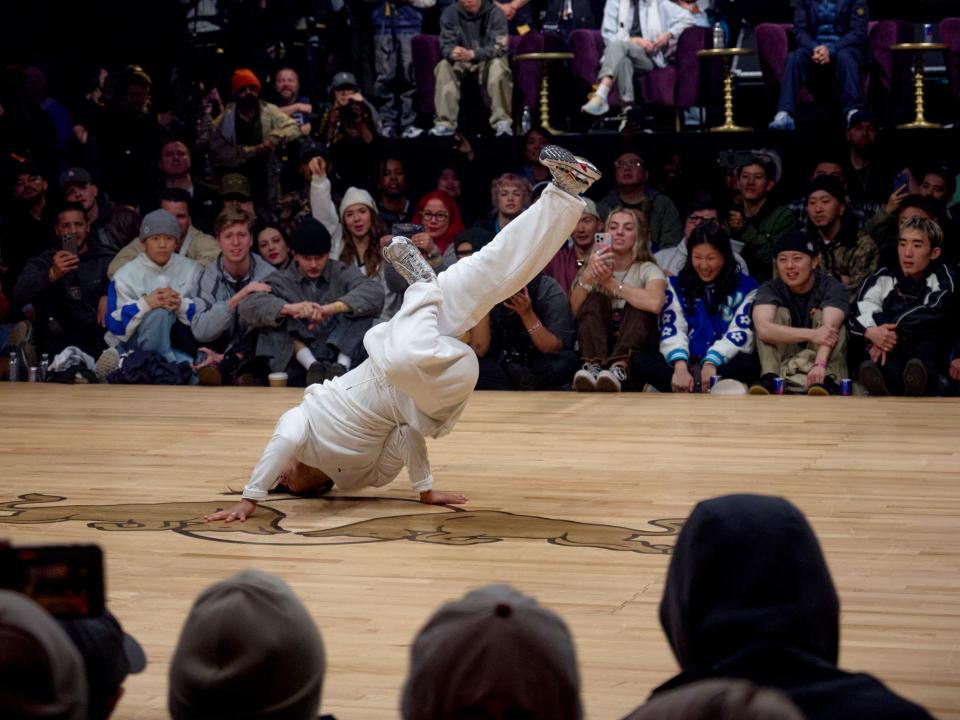
Now 41, Beta says she no longer trains for breaking competitions, but she still enjoys the dance and was recently a judge for Red Bull’s revival of the groundbreaking 2001 breaking event Lords of the Floor in Seattle, which is widely-considered the World Cup for breaking.
It was the World DanceSport Federation (WDSF) that introduced the sport to the Olympic stage during the 2018 Youth Games in Buenos Aires, Argentina. Following its success, the International Olympic Committee (IOC) voted to include breaking in the 2024 Olympics, making it the first dance sport to ever be included in the international games.
Breaking will make its Olympics debut on August 9 and 10. There are 16 slots allotted to female competitors and 16 to male competitors. Beta lauds the rise of b-girls in the sport. “It’s nice to go into a venue and it’s not just 400 males,” she says.
Still, Beta says breaking has a long way to go in terms of equality. Oftentimes, women compete separately from men (as will be the case at the Olympics), and when the competitions are co-ed, there are often no more than one or two b-girls included in the lineup. The way female breakers are treated among their male peers also changes the older they become, says Beta. “If a b-girl wants to be a mother or is a mother or become a mother, I don’t feel this culture is very accepting. They’re like, ‘Oh no, she’s a mom now,’ as if that means she’s done.”
She notes that there have been a few instances in which male judges dismissed b-girls at smaller competitions based on their baggy clothing despite clothing not being a qualification for judging at all. Typically, competitions are scored according to technique (how well you master the elements of breaking) and style (how you express the moves in the cypher). “You know damn well in no b-boy category are they going up to the dude and say, ‘Sorry, man, your pants are too baggy.’ That would never happen to them,” says Beta. “When you’re the only girl and you keep getting picked on [when] you just started doing something and you’re working hard, you’re like, ‘Eff that.’”
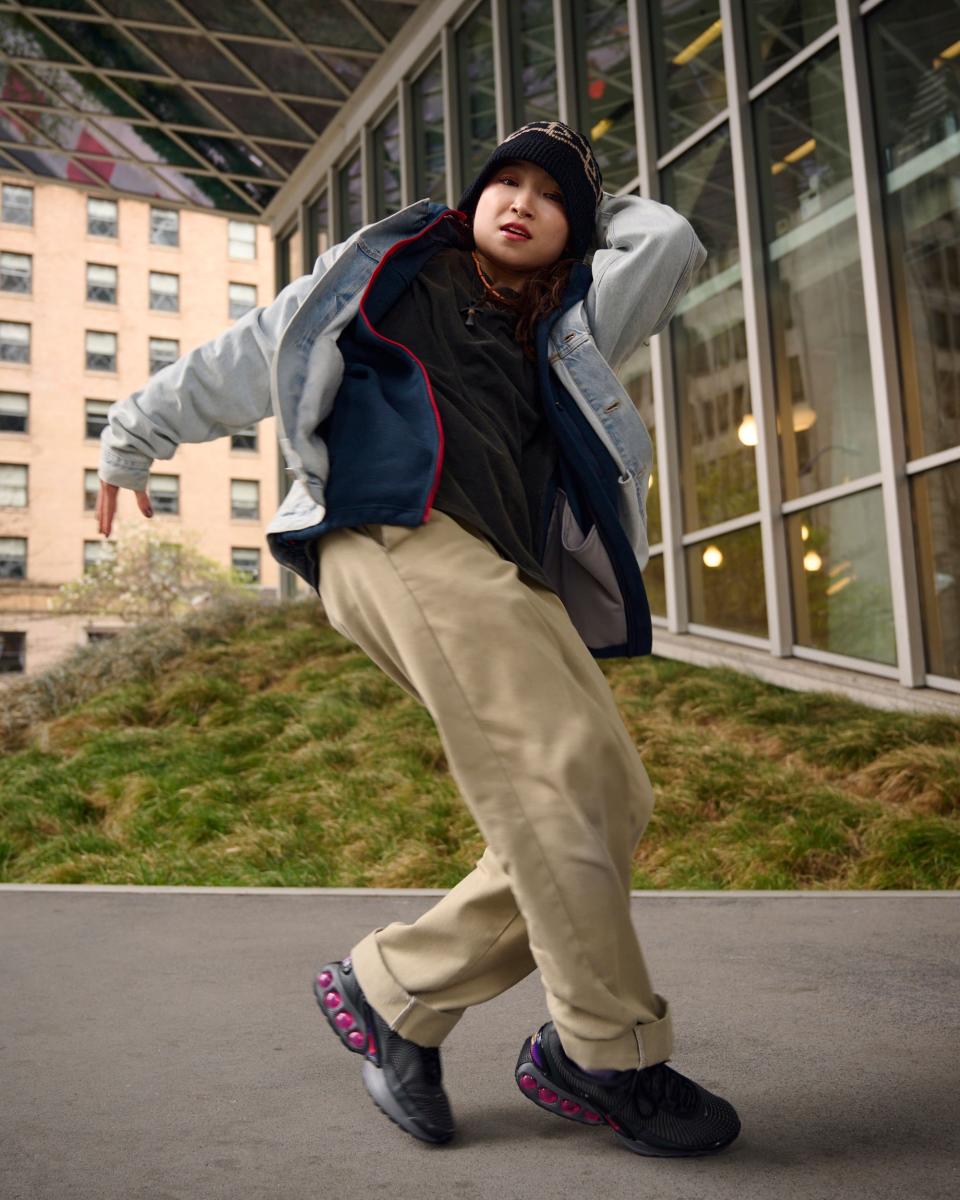
Before breaking became more internationally recognized, Beta says many of the b-girls she knew ended up quitting because of the lack of opportunity to compete. She had to forge her own path, applying to male categories during competitions and even winning several big-name battles—at her peak she became the first b-girl to win the prestigious Spy award, named after B-Boy Spy, a pioneering breaker who inspired generations to take up the sport.
“You can take it wherever you want,” says Beta when asked about her advice to aspiring b-girls. “It’s an art, but it requires [the] discipline of martial arts. It’s not easy to break. You need to earn it.”
Below, we spoke with three internationally recognized b-girls ahead of their historic Lords of the Floor performance , on what makes the newest generation of b-girls so damn cool—eyeliner included.
India
India has an undeniable air of confidence around her. Not in the pompous way that you might expect from a teenager who won the Dutch, European, and World breaking championship titles in the span of six months. Rather, it's the confidence of a young woman who has been competing since she was eight and knows exactly who she is and what she wants to do with her life.
When India enters the cypher at Red Bull Lords of the Floor, the crowd erupts. Cheers and hollers come from all sides of the venue as the 17-year-old and her dance partner, Logistx, prepare for their first battle against B-Girl Ami and B-Boy Taisuke. India and Logistx are the only all-female team in the bracket.
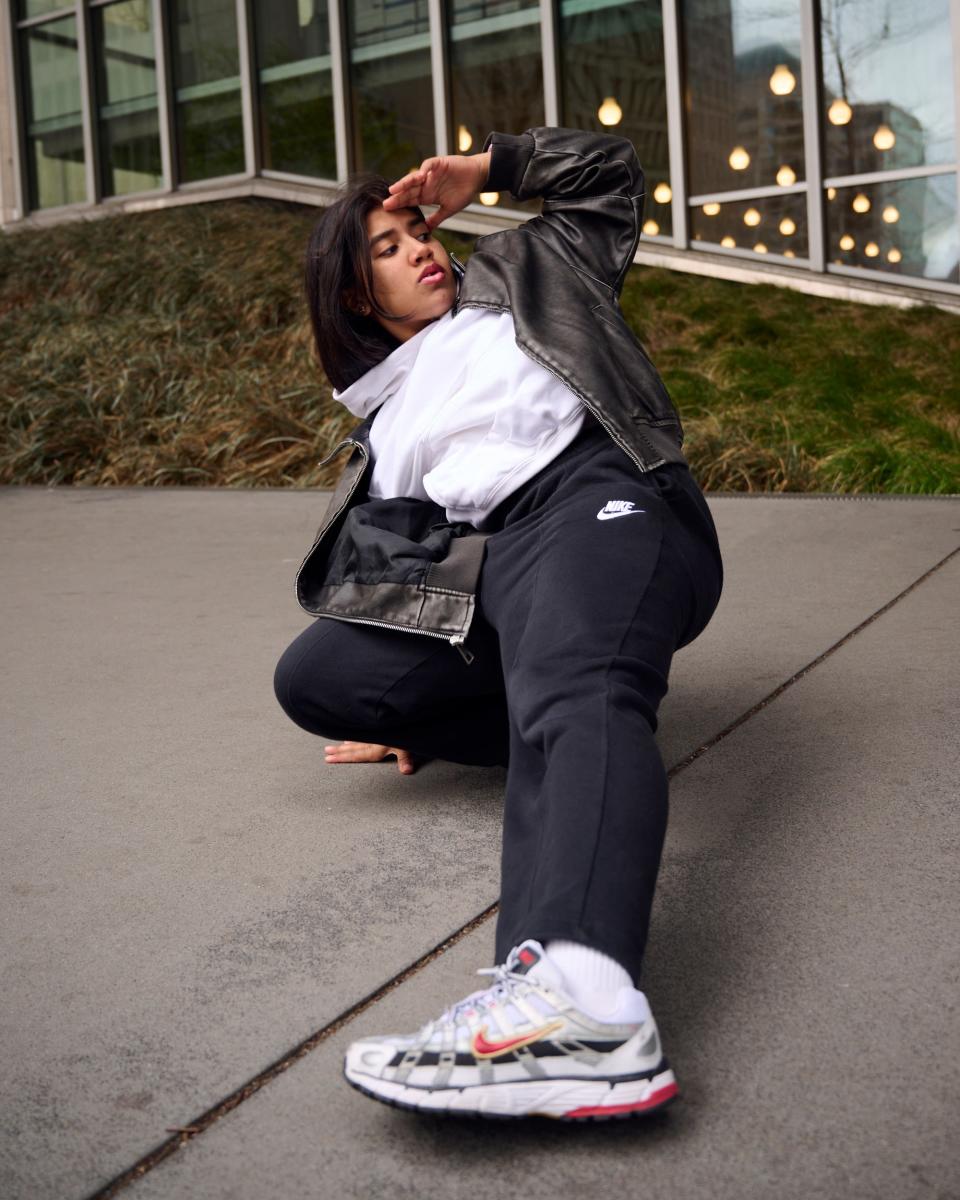
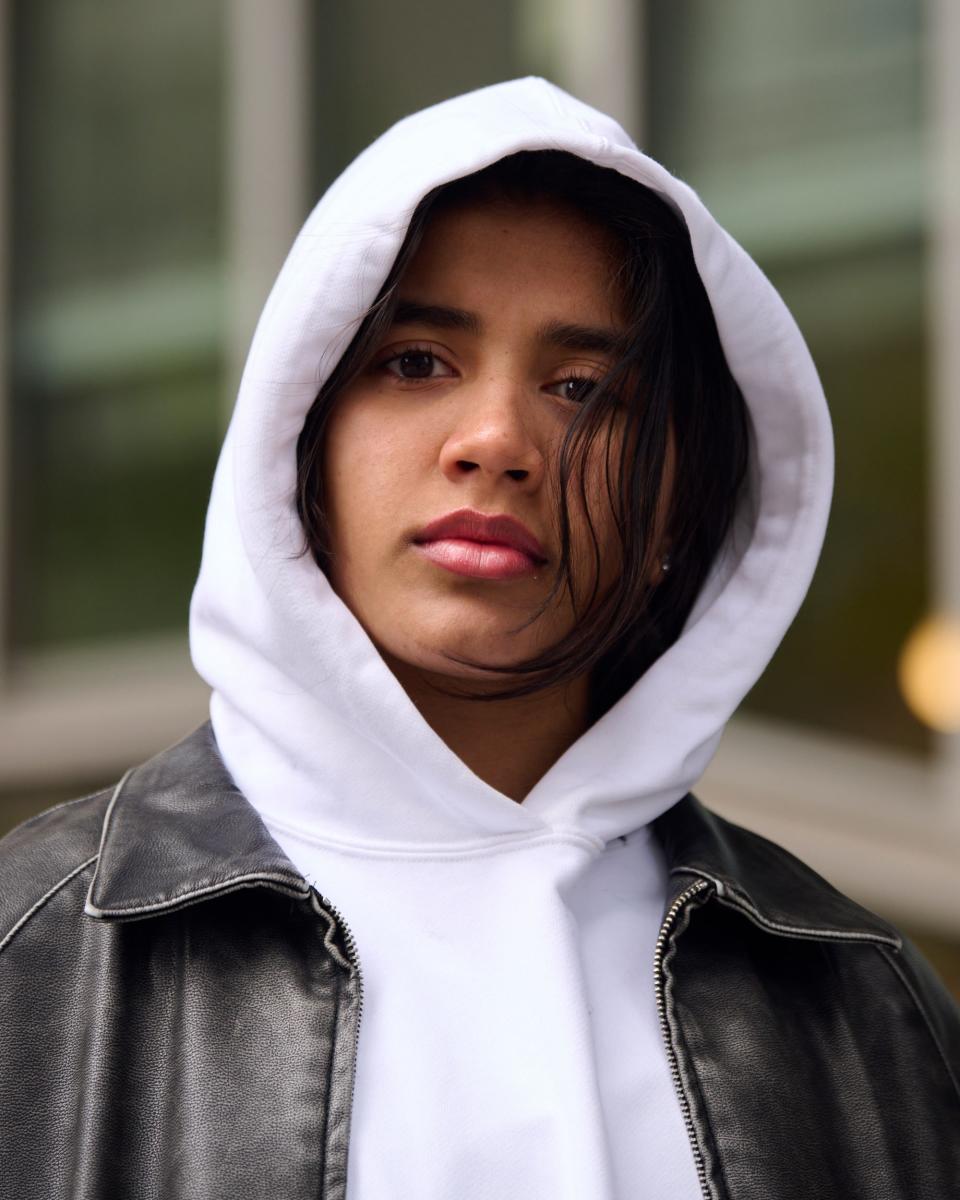
Fresh-faced and fitted in an all-white Nike tracksuit—her go-to breaking uniform—India bursts onto the floor with an impressive round and high-powered twist as her opening moves. Energetic and self-assured, India’s flow is unmistakably her own. Mixing the fundamentals of breaking with elements of her hip hop background, India helps her team, Queen Vision, win their battle and secure their spot in the Top 8.
“What I like about the sport is that you can go on and on. There's no end to it,” the Dutch superstar tells Allure ahead of the Lords of the Floor competition. “You can create millions of moves. And it's always a challenge to have a higher technique you want to learn or a bigger move. You can always evolve.”
Although they weren’t able to nab the semi-finalist title, India and Logistx were hailed as the queens of the floor and walked off with a standing ovation. Even in the face of adversity, competing against breakers with decades more experience and athleticism, India uses every challenge as a reason to grow. Her next hurdle? The 2024 Olympics, where she’ll be one of the first women to compete on the international stage.
“To compete at the first Olympics is really history,” says India. She’ll be one of the youngest athletes representing The Netherlands and was the first Dutch breaker to qualify. “I’m really honored,” she says. In preparation, India is training multiple times a week while juggling school work and travel for breaking competitions.
A self-described tomboy, India’s dance style might be complex, but her beauty regimen is clean and simple. She’s only now experimenting with makeup and hairstyles that express who she is as a teenager, often letting her older sister and cousins do her nails and beat. She’s currently obsessed with lip liner, mascara, and concealer, but often keeps it simple when she’s in the cypher.
“Beauty in dancing is being yourself,” she says with a wide grin, showing off her silver braces. “I think beauty is also being yourself. It’s very cliché, but everyone’s beautiful in their own way, so I think it’s really important to be yourself and to find your own style.”
Logistx
Logistx is sick the day before the massive Red Bull Lords of the Floor event. But she’s one of three b-girls who was invited to compete and she’s not letting anything stand in between her and the cypher—not even an illness.
When the DJ starts playing, the 20-year-old wastes no time claiming the floor. She times her footwork in step with the music, mixing subtle flair and tight technique together to help Queen Vision move onto the Top 8.
“I’m honored to represent females who are not afraid to embrace masculinity in our own way. I feel empowered every time I get to dance and it teaches me how to remain empowered in the same way in life outside of dance,” Logistx—given name, Logan—tells Allure.
Dancing since she was 8, the Filipina-American says she never approached breaking as a sport since there was zero projection of competitiveness when she first began. One of the youngest dancers to be signed by Red Bull and a world champion representing crews BreakinMIA and Underground Flow, she was technically tricked into taking breaking lessons by her dad, who told her it was an art class at a local church.
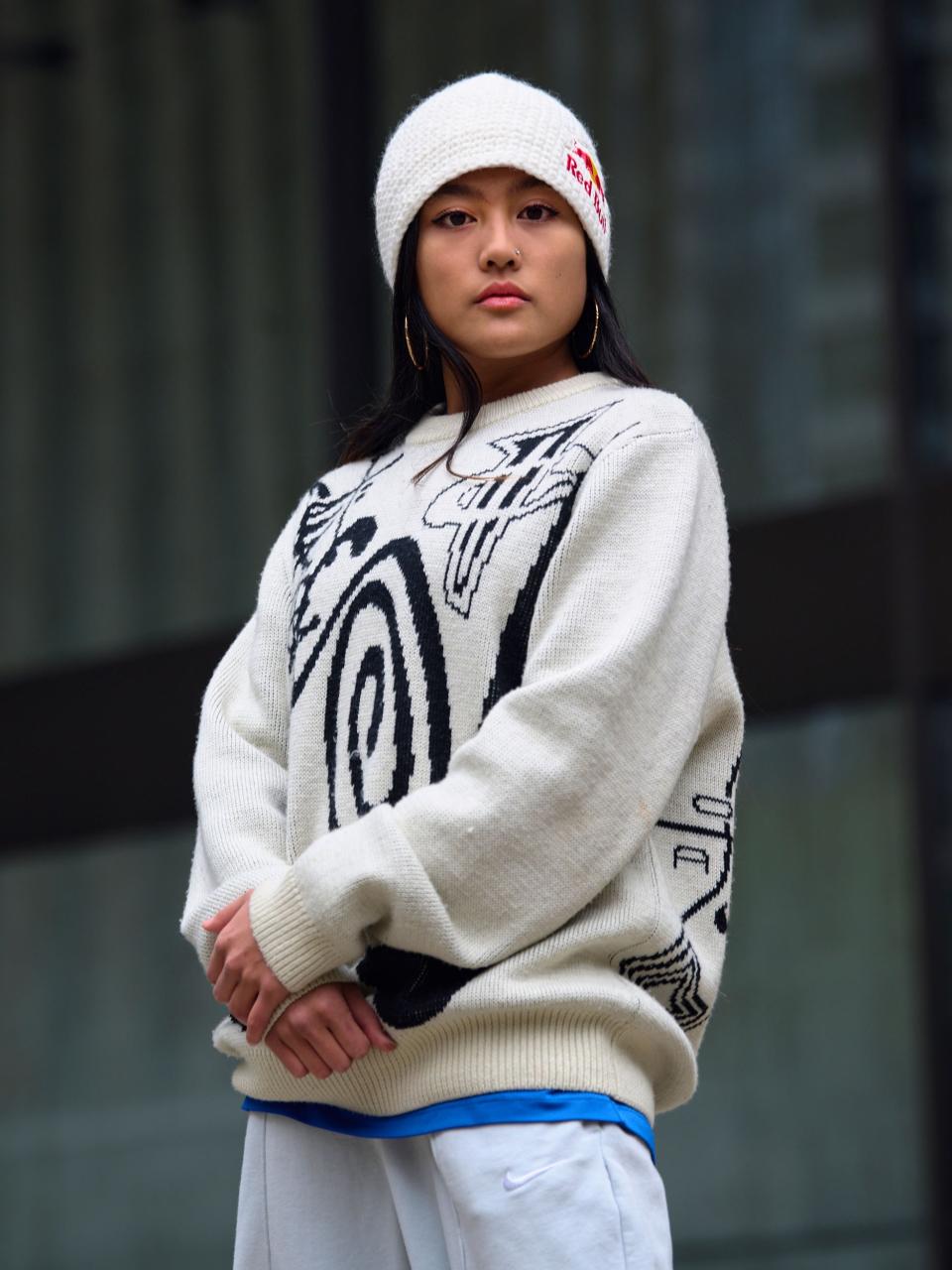
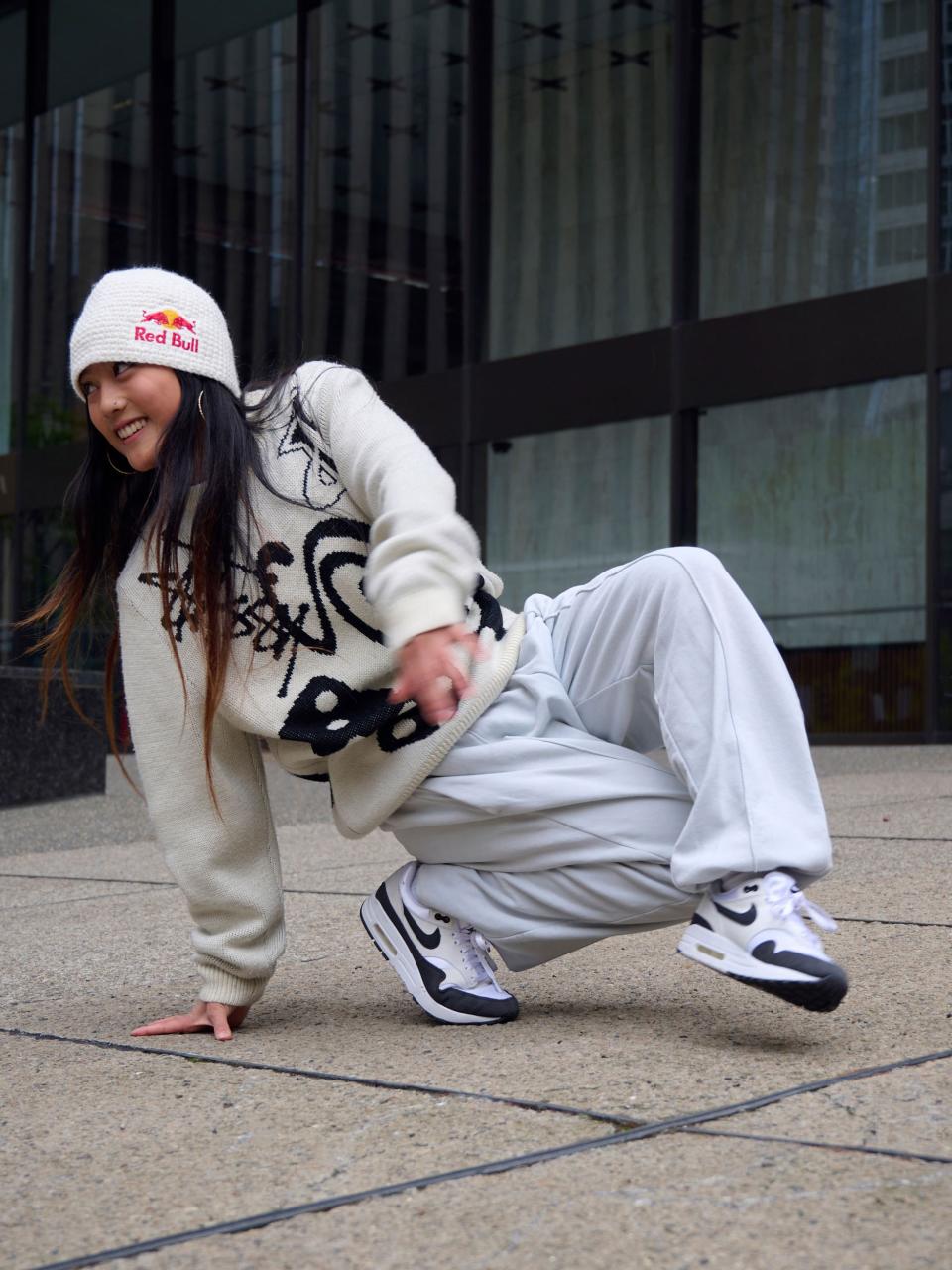
Despite her initial reservations about hip hop and breaking, Logistx fell in love with the dance forms and hasn’t stopped since. She prides herself on bringing a more traditional approach to her style, saying her technique is filled with “soul power” and is dynamic and ever-evolving.
“I’m just the type of person where I always want to do better. I don’t feel fulfilled if I’m not growing,” she says. “I’ve always wanted to be a dope b-girl because I’m in love with the journey of this dance and I have a lot of fun anytime I get to learn something new.”
While some b-girls opt not to wear makeup while dancing, Logistx uses hers as a tool to express herself. Her current favorite products to wear while competing include Fenty Beauty highlighter, lip gloss, and eyeliner. She leans towards casual street style, showcased with the white cargo pants and bandana wrapped around her head when I first meet her. “Fashion is another element of hip hop, so it’s a culture thing for me,” she says. “I’ve always been taught we need to dress fly and show up fresh if we’re gonna represent this culture.” Out of the cypher, Logistx swears by tiger balm to help with pain as well as essential oils, candles, and Indian incense to help her stay calm. She’s also a massive fan of coconut oil as moisturizer, rose water to hydrate her face, and any Lush Cosmetics products.
For Logistx, breaking allows her to work through her self-described traumatic childhood. “The things that made me want to give up on life are the same things that I use to motivate me to level up,” she says. Breaking, she says, helps her work through her feelings and she continues to train everyday to keep her mind, heart, spirit, and body healthy. She says she also uses practices like meditation to help her tune into her truest self so she doesn’t lose herself in a thought spiral or trigger-induced panic attacks.
She is thoughtful and calculated about her approach to breaking and to life. This is in part where she gets her b-girl name from: “Logistx” was suggested by her father, since she’s always planning ahead. “I made my first schedule when I was four,” she says with a laugh.
Today, she is planning for the Olympics: Earning 74 out of 100 possible points during the qualifiers, Logistx placed fourth overall and earned herself a spot on Team USA. With an eye towards Paris, Logistx’s training sessions happen five to seven times a week, sometimes multiple times a day, and can last anywhere from two to four hours. She starts with an intense warm-up filled with deep stretching to help prevent injuries before heading into creative flows and drills.
For her, breaking is a dance form that is as tough as it is rewarding. “Knowing I can [break] and doing the moves itself is empowering because it’s not easy,” Logistx says. “Battling forces us to step into our power.”
Ami
Ami is wearing intentionally smudged reddish-brown eye makeup and a subtle orange lipstick when she greets me. Rocking beaded hoops and a crocheted bucket hat, she’s prepped and ready to watch the Lord of the Floor prelims from the edge of the cypher.
“To me, wearing makeup is my switch. It gives me confidence,” the 25-year-old tells Allure. “When I’m going to the competition, I always want to be the best version of myself.”
Born in Japan, Ami is both her given and b-girl name. She started dancing at six years old after attending her older sister’s breaking showcase. There, she remembers seeing someone perform the famed windmill move, which involves advanced back spins with your feet in the air in an extended V-shape—and the rest is history. In 2018 she became the first b-girl to join Red Bull BC One All Stars and has made a name for herself internationally.
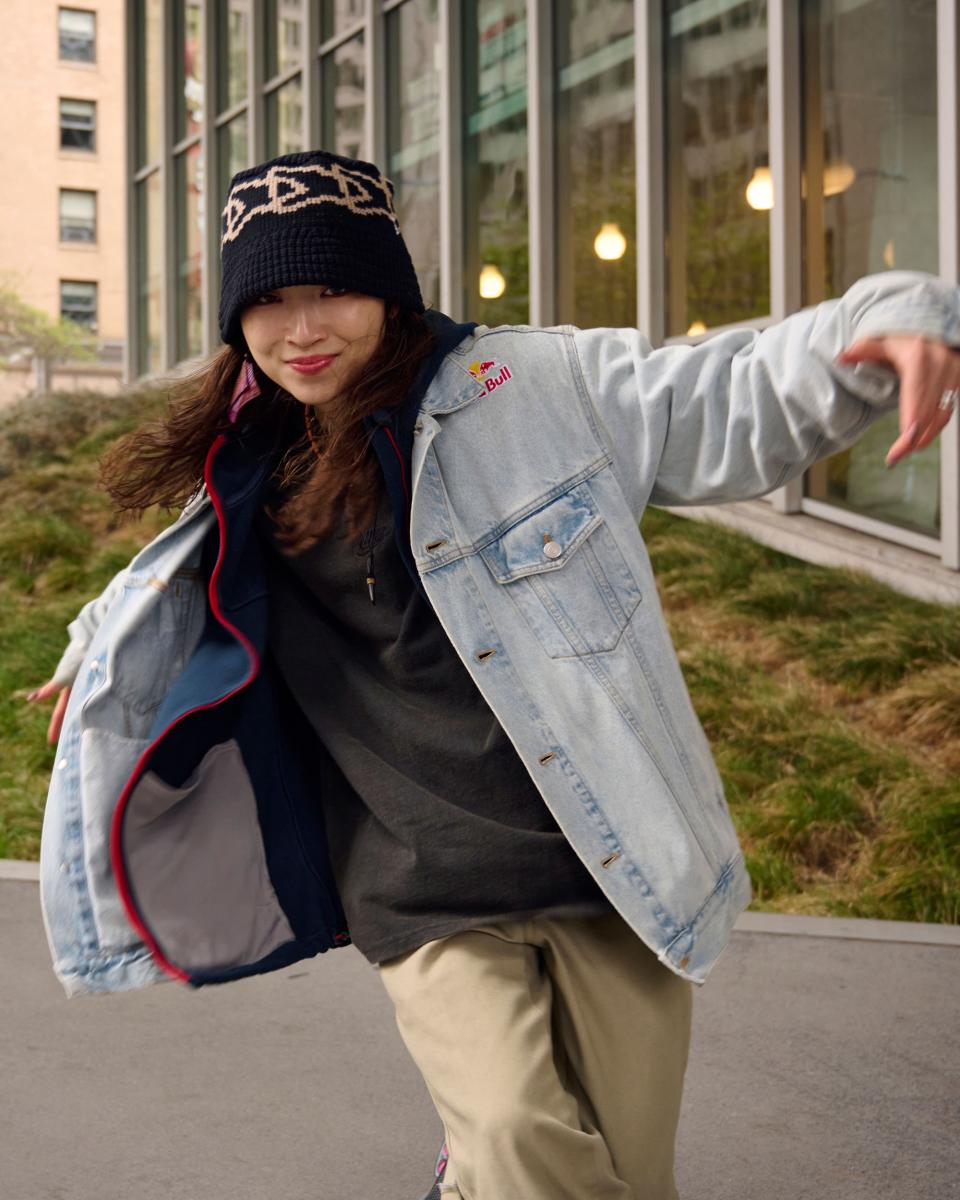

While she’s still trying to find the best anti-sweat products to wear while she breaks, she swears by MAC’s long-lasting lipsticks because the formula is transfer-proof—even when she’s spinning on her head in the cypher. Much like everyone’s breaking style, Ami sees makeup as a form of expression that’s unique to only them: “Everybody is different, and that’s the beauty of it. You’re not trying to be somebody else.” she says.
At the Lords of the Floor event, Ami is competing with fellow Japanese breaker B-Boy Taisuke on Team Vale-Tudo. In a face-off against Queen Vision, Ami twists and contorts her body to its limits. She’s notorious for her razor-sharp footwork and explosive power moves, both of which are on display as she fights for a spot in the Top 8.
Wearing Nike shoes, baggy utility pants, a dark gray Red Bull shirt, and a light gray beanie, Ami adds her own feminine style to the traditional b-girl uniform. She adorns her outfit with a gold chain, tassel earrings that bounce as she moves with the high-energy beat, and subtle touches of eye makeup.
For Ami, breaking doesn’t have a limit. It pushes you harder, makes you want to practice and continue to fight to nail certain moves and express your emotion in ways you’d never expect. Despite the ups and downs and endless days of training, breaking is Ami’s release, she says.
Her next fight will be at the Paris Olympics: After earning 95 out of 100 possible points during the Olympic qualifiers in June, Ami solidified her spot on Team Japan. Despite the massive achievement, she’s not stressed. In fact, she’s only focused on her style—doing what she thinks is cool at the moment rather than focusing on other people’s expectations.
“Last year I had so much stress,” she says of the difference between breaking as a culture and breaking as a competition. “From those experiences I realized that I started breaking because it’s fun, so I don’t want to [give in to] those pressures.”
Read more stories about sports and beauty:
The Olympic Track & Field Trials Had More Trendy Beauty Moments Than a Red Carpet
The WNBA Draft Was the Biggest Beauty Spectacle of the Year So Far
Watch an Olympic gymnast's entire routine:
Follow Allure on Instagram and TikTok, or subscribe to our newsletter to stay up to date on all things beauty.
Originally Appeared on Allure


